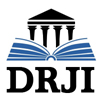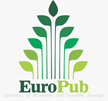OPTIMIZATION OF WORKSHOP FACILITIES IN VOCATIONAL SCHOOL TO SERVE THE PRACTICUM OF LIGHT VEHICLE ENGINE MAINTENANCE
Abstract
This research is motivated by the lack of optimal practical infrastructure in vocational schools on the subject of light vehicle engine maintenance. This study aims to optimize the practice facilities at SMK PU Negeri Bandung. The method used in this research is a quantitative descriptive method with instruments of observation, interviews and documentation, then the collected data is processed statistically. The results showed that the light vehicle technique had the smallest ratio between the area of the room and the number of students among other skill competencies. The level of availability of infrastructure for an engine work area of 96 m², an electrical work area of 48 m², a chassis work area of 64 m², an instructor's room work area of 48 m² and an overall workshop area of 256 m² so that if categorized as standard workshop infrastructure at SMK PU Negeri Bandung 25% less than the standard BSNP and Permendiknas RI No. 40 of 2008. Therefore, optimization is done by making a practice schedule to increase the arrangement and use of practical infrastructure to 80%.
Keywords
Full Text:
PDFReferences
Apendi, T. (2018). Manajemen Pengembangan Sekolah Dasar Standar Nasional: Kajian Teoretik. INTELEGENSIA: Jurnal Pendidikan dan Pembelajaran, 3(2), 35-47.
Gentles, S. J., Charles, C., Ploeg, J., & McKibbon, K. A. (2015). Sampling in qualitative research: Insights from an overview of the methods literature. The qualitative report, 20(11), 1772-1789.
Hartono, R. (2019). Implementation of learning innovations in islamic education in improving student achievement (study at Shalahuddiin High School In Gayo Lues Regency). FITRAH: International Islamic Education Journal, 1(2), 30-40.
Ivan, M. (2021). Peluang dan tantangan program studi pendidikan nonformal dalam pembangunan masyarakat pasca implementasi UU Nomor 23 Tahun 2014 tentang Pemerintah Daerah di Era Ekonomi Digital. Salus Cultura: Jurnal Pembangunan Manusia dan Kebudayaan, 1(2), 117-127.
Kang, B. (2021). How the covid-19 pandemic is reshaping the education service. The Future of Service Post-covid-19 Pandemic, 1(1), 15-36.
Krismadinata, U. V., Jalinus, N., Rizal, F., Sukardi, P. S., Ramadhani, D., Lubis, A. L., ... & Novaliendry, D. (2020). Blended learning as instructional model in vocational education: Literature review. Universal Journal of Educational Research, 8(11B), 5801-5815.
Kristiyandaru, A., & Widodo, A. (2021). Instrumen penilaian mata pelajaran pendidikan jasmani olahraga dan kesehatan pada siswa SMP: A systematic review. Jurnal Ilmiah Mandala Education, 7(2), 162-167.
Limilia, P., & Aristi, N. (2019). Literasi media dan digital di Indonesia: Sebuah tinjauan sistematis. KOMUNIKATIF: Jurnal Ilmiah Komunikasi, 8(2), 205-222.
Mulyani, T., & Armiati, A. (2021). Efektivitas penggunaan ensiklopedia berbasis teknologi sebagai sumber belajar di sekolah menengah atas (SMA): Literature review. Jurnal Ecogen, 4(2), 293-305.
Mulyawan, M. D., Kumara, I. N. S., Swamardika, I. B. A., & Saputra, K. O. (2021). Kualitas sistem informasi berdasarkan ISO/IEC 25010: Literature review. Majalah Ilmiah Teknologi Elektro, 20(1), 15-28.
Mursiti, M., Sailah, I., Marimin, M., Romli, M., & Denni, A. (2021). Strategi pengembangan sumber daya manusia yang berdaya saing dan berkelanjutan pada agroindustri tebu: tinjauan literatur dan agenda penelitian mendatang. Jurnal Teknologi Industri Pertanian, 31(2), 129-142.
Novita, M. (2017). Jurnal Sarana dan prasarana yang baik menjadi bagian ujung tombak keberhasilan lembaga pendidikan islam. Nur El-Islam, 4(2), 97-129.
Prasetia, A. (2021). Faktor-faktor yang mempengaruhi persaingan dan pertumbuhan pasar: budaya, sosial, personal (suatu literature review). Jurnal Ilmu Manajemen Terapan, 2(4), 442-462.
Ridwan, M., Suhar, A. M., Ulum, B., & Muhammad, F. (2021). Pentingnya penerapan literature review pada penelitian ilmiah. Jurnal Masohi, 2(1), 42-51.
Rimbano, D. (2016). Image effect of higher education, services campus, education level of parents and professionals students parents of interest in choosing the Department of Accounting STIE Mura City Lubuklinggau. Orasi Bisnis: Jurnal Ilmiah Administrasi Niaga, 16(2), 25-41.
Sandika, B. (2015). A review about the way of study through technical drawing education major on building engineering student at class X In SMK Negeri 1 Tanjung Raya. CIVED, 3(2), 598-608.
Sebele-Mpofu, F. Y. (2020). Saturation controversy in qualitative research: Complexities and underlying assumptions. A literature review. Cogent Social Sciences, 6(1), 1-17.
Sulistyanto, S., Mutohhari, F., Kurniawan, A., & Ratnawati, D. (2021). Kebutuhan kompetensi dalam pasar tenaga kerja di era revolusi industri 4.0 bagi siswa SMK. Jurnal Taman Vokasi, 9(1), 25-35.
Warsita, B. (2017). Peran dan tantangan profesi pengembang teknologi pembelajaran pada pembelajaran abad 21. Kwangsan: Jurnal Teknologi Pendidikan, 5(2), 77-90.
Wijaya, I. B., & Fajar, A. M. (2020). Pengembangan modul pembelajaran berorientasikan problem based learning (PBL) untuk meningkatkan keterampilan proses sains siswa pada materi cahaya dan alat optik. Jurnal Inovasi Pendidikan Sains, 11(1), 8-17.
DOI: https://doi.org/10.17509/jmee.v8i1.37220
Refbacks
- There are currently no refbacks.
Copyright (c) 2021 Journal of Mechanical Engineering Education

This work is licensed under a Creative Commons Attribution-ShareAlike 4.0 International License.
Indexed by:
ISSN: P 2356-4997
View My Stats
 Journal of Mechanical Engineering Education (Jurnal Pendidikan Teknik Mesin)
Journal of Mechanical Engineering Education (Jurnal Pendidikan Teknik Mesin)







